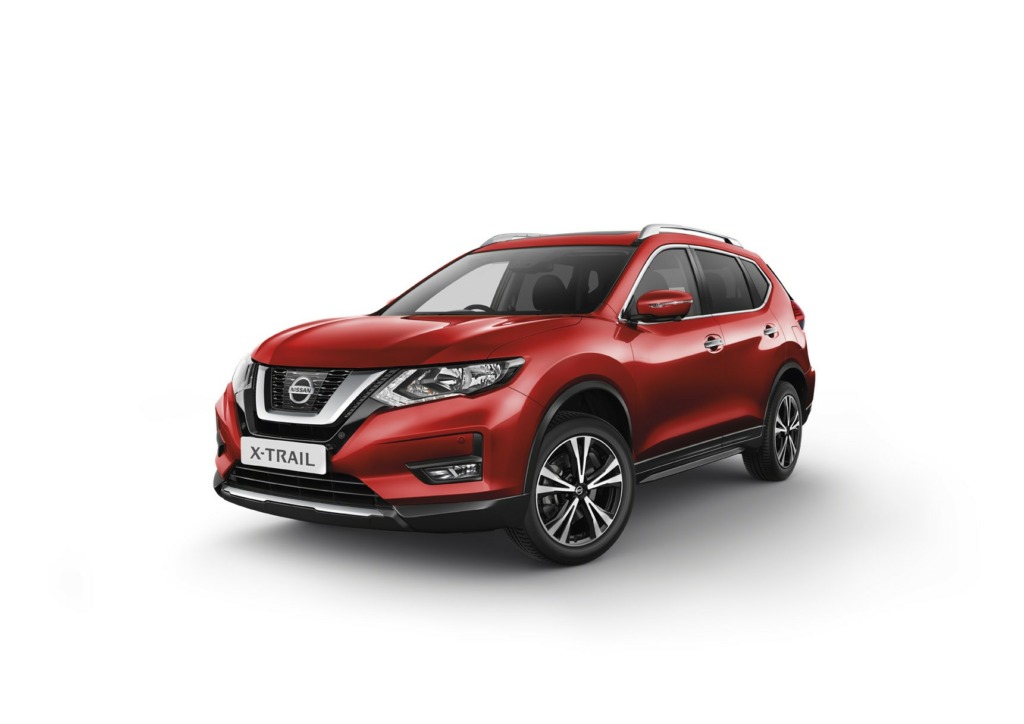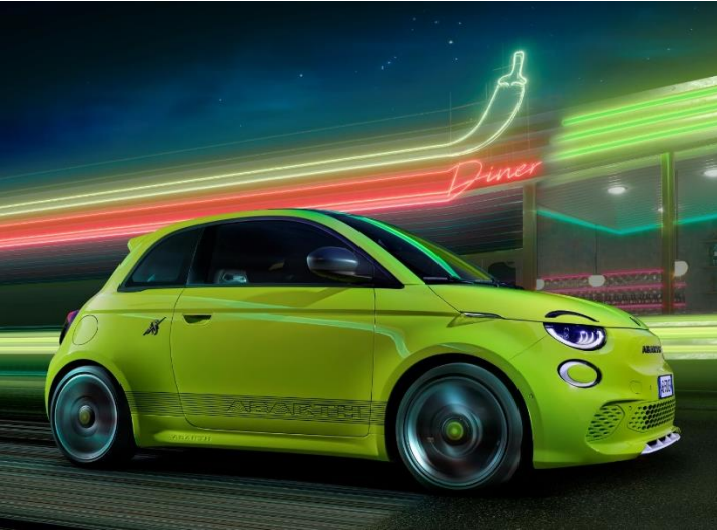The third generation Nissan X-Trail matured very nicely as a family-sized SUV. The X-Trail sat just above the brand’s popular Qashqai in the company’s line-up and borrowed much of its technology. X-Trail buyers though, get significantly more space, with the option of seven seats. This model is also slightly tougher and more suitable for more adventurous families. In this updated form, it was smarter, more sophisticated and better connected too.
The History of the Nissan X-Trail
We live in the age of the SUV. And back in 2017, this was the world’s best selling one, the Nissan X-Trail. This third generation model was improved three years after launch to create the car we’re going to look at here.
In 2017, this model found itself plumb in the middle of the new car market’s trendy sweet spot. Sales of SUVs by then out-stripping those of every other segment. Brands who’d anticipated this phenomenon found themselves perfectly placed to take advantage of it and Nissan was one of them. Back then, this model line competed in the section of the SUV market that Nissan, by 2017, was covering with its hugely successful Qashqai. To leave space for that car, this third generation X-Trail, launched in 2014 and was made a little bigger and given a 7-seat option.
Which proved to be an inspired piece of product positioning. If you include the US market by 2017 over three-quarters of a million X-Trails were being sold globally every year. Which, back then, made this easily the brand’s best selling vehicle worldwide. An awful lot of family buyers liked the idea of a mid-sized Qashqai-class crossover, but needed one with a little more space. So many that by 2017, quite a few rival brands had piled into this SUV market sub-segment in order to meet this demand. Examples of which include the Skoda Kodiaq, the Peugeot 5008 and the Volkswagen Tiguan Allspace.
Nissan responded to this just as it did to the tidal wave of competition thrown against the five-seat-only third generation Qashqai model. A model that shares virtually all of this car’s engineering. Namely, to assure us that the original was still the best. To underscore that fact Nissan introduced the small but significant package of upgrades in summer 2017. This created the facelifted version of the MK3 model that we’re going to look at here. These delivered smarter looks, extra luxury, stronger standards of safety and even the option of an autonomous driving aid.
The initial range with this facelifted X-Trail gave customers a choice between 1.6 and 2.0 dCi diesels and a 1.6 DiG-T petrol unit. Further changes followed in 2019, when a 1.7 dCi diesel replaced the 1.6 dCi and 2.0 dCi units. A 1.3-litre DIG-T petrol variant was introduced to replace the 1.6 DiG-T petrol unit. This MK3 X-Trail finished production in 2021; a fourth generation model launched in the Autumn of 2022.
The Cost of a Nissan X-Trail
Prices for this post-2017 facelift version of the third generation X-Trail model start at about £13,900 (around £16,000 retail) for a ’17-era 2.0 dCi CVT diesel model in volume ‘Acenta’ spec. This rises to around £23,000 (around £25,200 retail) for an equivalent 1.7 dCi ‘N-Connecta’ CVT ’21-era car. You’ll pay a little more of course if you want 4WD. For a ’16-era model 1.6 dCi ‘N-Tec’ SE 7-seat model, you’re looking at around £14,500 (around £16,600 retail). With prices rising to around £23,000 (around £25,200 retail) for an equivalent later 1.7 dCi ‘N-Connecta’ 7-seat car.
Replacement Parts
An air filter will be priced in the £7 bracket, an oil filter will sit in the £5 bracket, a fuel filter will be around £27 and an alternator will be around £272. Front brake pads are in the £21 to £54 bracket for a pair, with rears pads in the £17-£37 bracket. Front brake discs cost in the £51-£102 bracket, with rear discs in the £54-£92 bracket. Wiper blades cost in the £2 to £12 bracket each. A starter motor will cost around £195. If you need replacement parts for your Nissan X-Trail get in touch here.
Significant Features of the Nissan X-Trail
This improved post-’17-plate-era version of the third generation X-Trail model wants you to know that it’s a fully-fledged SUV. Family buyers shouldn’t be daunted by the idea of trading up from a mid-sized MPV or Mondeo-segment estate into a car of this kind. Probably the key aesthetic change made to this revised MK3 model was the addition of the latest version of Nissan’s distinctive ‘V-Motion’ front grille. This frames a smarter corporate badge and cuts deep down into the re-styled bumper. The outer edges of which feature smarter rectangular fog lamps.
And up front? There’s still nothing here that’ll scare Audi or Mercedes, but thanks to the well-judged package of improvements made to this revised MK3 model, the cabin ambience took a welcome step up-market. What about the second row? Well once inside, you’ll find a bench that can slide backwards or forwards over a 260mm range. The backrests recline too. As for the third row seating, you’ll need to show a degree of athleticism to get to them.
As for the boot, once the tailgate raises, 135-litres of room is revealed if you have a 7-seat variant. Usually of course, you’ll have the extra pews folded into the floor. In which case 445-litres of room can be freed up. If you’ve opted for a five-seat-only X-Trail variant, that figure will rise to 565-litres. Either way, the clever double load floor enables you to make the most of the space on offer, allowing you to divide the cargo area into upper and lower sections through eighteen different settings. If you need more room and have both seating rows folded, a vast 1,996-litre capacity is possible.
Potential issues with the Nissan X-Trail
While most X-Trail owners in our survey were happy with their cars, we came across a surprising number who’d had some issues. We heard reports of infotainment screen freezing, handbrakes not working and an engine warning light flashing on. In one case the hands-free ‘phone feature didn’t work either; look out for all these things on your test drive.
The pre-facelift model exhibited a number of owner problems it’s also keeping an eye out for. One buyer had issues with the front brake discs warping after just 10,000 miles. So watch out for graunching sounds as you stop. Another owner experienced issues with the keyless ignition system and the auto stop/stat set-up. Plus his dCi X-Trail was diagnosed as failing to regenerate its DPF diesel particulate filter. Something heralded by the DPF fault light illuminating. Apparently this happens if dCi versions of the car aren’t driven frequently enough at higher speeds on the highway. This issue requires a static regeneration at a dealership.
We also came across reports of rattling and flexing noises from the dashboard, door panels, sunroof and the seats. At Vospers we always conduct a multi-point safety check and whenever possible we will provide you with the cars service history. For more information on how we ensure you are getting the best out of buying a used car from Vospers check out our peace of mind policy here.
The Nissan X-Trail Driving Experience
Like most of its similarly sized rivals, this X-Trail isn’t one of those SUVs that’ll encourage you into finding a twistier route back from the supermarket. This is despite an Active Trace Control system that imperceptibly brakes individual wheels through tighter bends to reduce understeer and quicken progress through turns. What it can do though, is smooth your way over bumpy surfaces. This is thanks to a multi-link rear suspension system denied to most versions of the brand’s smaller Qashqai SUV. The X-Trail is engineered to work with an ‘Active Ride Control’ system that monitors the road surface to detect undulations. This could potentially cause the car to pitch about, then altering the damping to compensate.
None of this changed as part of the package of improvements made to this revised MK3 model. The engine line-up was (initially) the same too. Buyers are offered a choice of three different units. Most looking for a ’17 or ’18-plate X-Trail opt for the 1.6-litre dCi 130 diesel – and there was a 1.6-litre DIG-T 163PS petrol powerplant too. Towers looking for a ’17 or ’18-plate X-Trail will want the top 2.0-litre dCi 177PS variant, which (like the 1.6 dCi) could be paired with both 4WD and Nissan’s ‘Xtronic’ CVT auto transmission (with earlier X-Trails, you couldn’t have both at the same time).
Original customers could also specify these two features separately, though only on a diesel model. In 2019, the two diesel engines made way for a single 1.7 dCi diesel unit. The 1.6 DiG-T petrol unit was also replaced by a more frugal 1.3 DiG-T petrol powerplant. All post-2017-era X-Trails could be had with the option of a ‘Pro-Pilot’ autonomous driving aid for highway use. The optional ALL MODE 4×4-i system is a capable set-up but your off road adventures will need to be limited to light field tracks. Still, the commanding driving position makes you feel that more would be possible and for most buyers, that’ll be all that really matters.
Summary
We can see why the third generation X-Trail model was so successful for Nissan, particularly in this updated form. It offers enough crossover cues to make you feel acceptably trendy but also sufficient size and space to make owners also feel that they’ve bought into something smartly sensible. Plus of course it’s perfect for those who’ve considered a slightly smaller Qashqai-class model – or owned one – but now need something more practical.
Of course, you can’t have everything. This car doesn’t drive with quite as much verve and flair as a smaller SUV, but we can’t blame Nissan for that. This is, after all, a slightly larger vehicle.
The changes made to this revised model didn’t hugely change its buying proposition but it remains a starting point for anyone buying a family-sized SUV in this segment. If that’s you and you’re looking for an SUV of this kind, then ‘X’ may very well mark the spot. If you are interested in buying a used Nissan X-Trail get in touch here.





